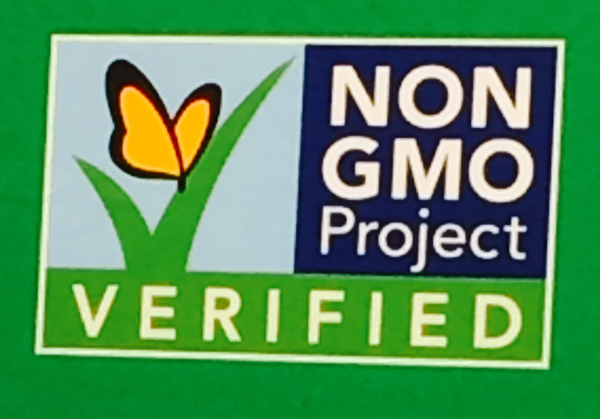
 Walking the floor of the National Restaurant Association Show that just ended in Chicago, the claim I saw most often about new products on display was that they didn’t contain genetically modified organisms, or GMOs.
Walking the floor of the National Restaurant Association Show that just ended in Chicago, the claim I saw most often about new products on display was that they didn’t contain genetically modified organisms, or GMOs.
That made me sad, but it was a symptom of a lot of what I think is wrong in our conversation about food these days.
I also saw more and more gluten-free items, and a bunch of premium products proud of the fact that they only contained natural sugars, from organic evaporated cane juice to agave syrup to palm sugar.
Of all of those claims, the only one that any one really ought to care about is gluten-free items. The National Foundation for Celiac Awareness cites research estimating that about 18 million Americans have some level of sensitivity to gluten. That’s a lot of people, and six times the number of people with Celiac disease, who really should avoid eating any kind of gluten, but all 18 million of those people can benefit from the proliferation of items tailored for them, and that’s great.
But according to data from the NPD Group, as many as five times that number of people are avoiding gluten for reasons that I can’t fathom. From what I understand, some are eschewing the wheat protein to lose weight, which makes absolutely no sense at all. Others seem to be under the impression that gluten’s bad for people who aren’t sensitive to it, which, according to current science, is balderdash.
Maybe others are avoiding it so as not to feel left out. I don’t know.
The natural sugar claim is significantly worse, because although 18 million Americans have gluten sensitivities, more than 29 million Americans have diabetes, according to the Centers for Disease Control and Prevention, and more than one-third of American adults (78.6 million, or 34.9 percent, according to the CDC), are clinically obese. Implying that “cane juice” (often called just that rather than “sugarcane juice,” as if the cane might be bamboo or rattan), agave, palm sugar or honey are better for people than high-fructose corn syrup is deceptive at best and dangerous at worst. Our bodies don’t know where sugar comes from, they just recognize the fructose and glucose molecules and metabolize them. Although there are some indications that consuming massive quantities of fructose can be marginally worse than consuming sucrose (which is 50 percent glucose and 50 percent fructose), they’re both sugar, and in fact agave is much higher in fructose than HFCS. Agave syrup on average is 80 percent or more fructose, whereas HFCS is generally 55 percent fructose — the same fructose level as honey, incidentally.
And it’s all sugar, a delicious sweetener that can contribute to much happiness in life, but in excess it can contribute to obesity, which is the leading cause of diabetes — the degree to which someone is overweight correlates directly to the likelihood that he or she will get diabetes.
Then there are GMOs — or foodstuffs that have been grown from seeds that have had their genetic makeup altered using advanced technology.
It sounds creepy, I know, and I’m sorry about that, but there’s literally no significant evidence that the GMOs on the market today have any ill effects on the animals who eat most of them, nor on people who eat the rest. Jon Entine laid that all out clearly last year in Forbes, and at a panel discussion at the NRA conference, Gregory Jaffe of the Center for Science in the Public Interest even came out in defense of GMOs.
You might know the CSPI better as the “food police” or advocates of a nanny state. They advocate for menu labeling and launch attacks that I tend to find excessively shrill against specific types of food — particularly high-fat mammal protein and dairy, and high-sugar items. But I agree with them when it comes to GMOs.
Jaffe, director of the CSPI's Project on Biotechnology, pointed out that only eight crops on the market are genetically modified — corn, soybeans, cotton, sugar beets, canola, alfalfa, papaya and squash — and that most of them are in animal feed or processed ingredients in which the protein (which is the part that’s genetically modified) is removed anyway — things like high-fructose corn syrup.
He did say, and I agree, that as new GMO products come on the market they should be evaluated on a case-by-case basis. He noted that since the introduction of genetically modified crops that are resistant to glyphosate, also known by the trade name Roundup, weeds resistant to the herbicide have started to emerge.
Such “Roundup Ready” crops were introduced to allow for the spraying of the herbicide without harming the cash crop, but as glyphosate-resistant plants spread, new strategies will have to be developed.
I’m also not altogether convinced that use of so much glyphosate is ideal for the environment, but I don’t know enough about the benefits of Roundup Ready crops (such as reduction in the need to till soil) to know whether the benefits outweigh the drawbacks, and the fact that I have reservations about one type of GMO certainly doesn’t mean that all GMOs are bad. The idea that removing GMOs should be top-of-mind for anyone seems absurd to me. Even super-liberal Mother Jones magazine has said that they’re “totally safe to eat.”
It’s another distraction that keeps us from focusing on real food-related health problems we face in the United States, the overwhelmingly most serious of which is obesity.
Contact Bret Thorn at [email protected].
Follow him on Twitter: @foodwriterdiary

